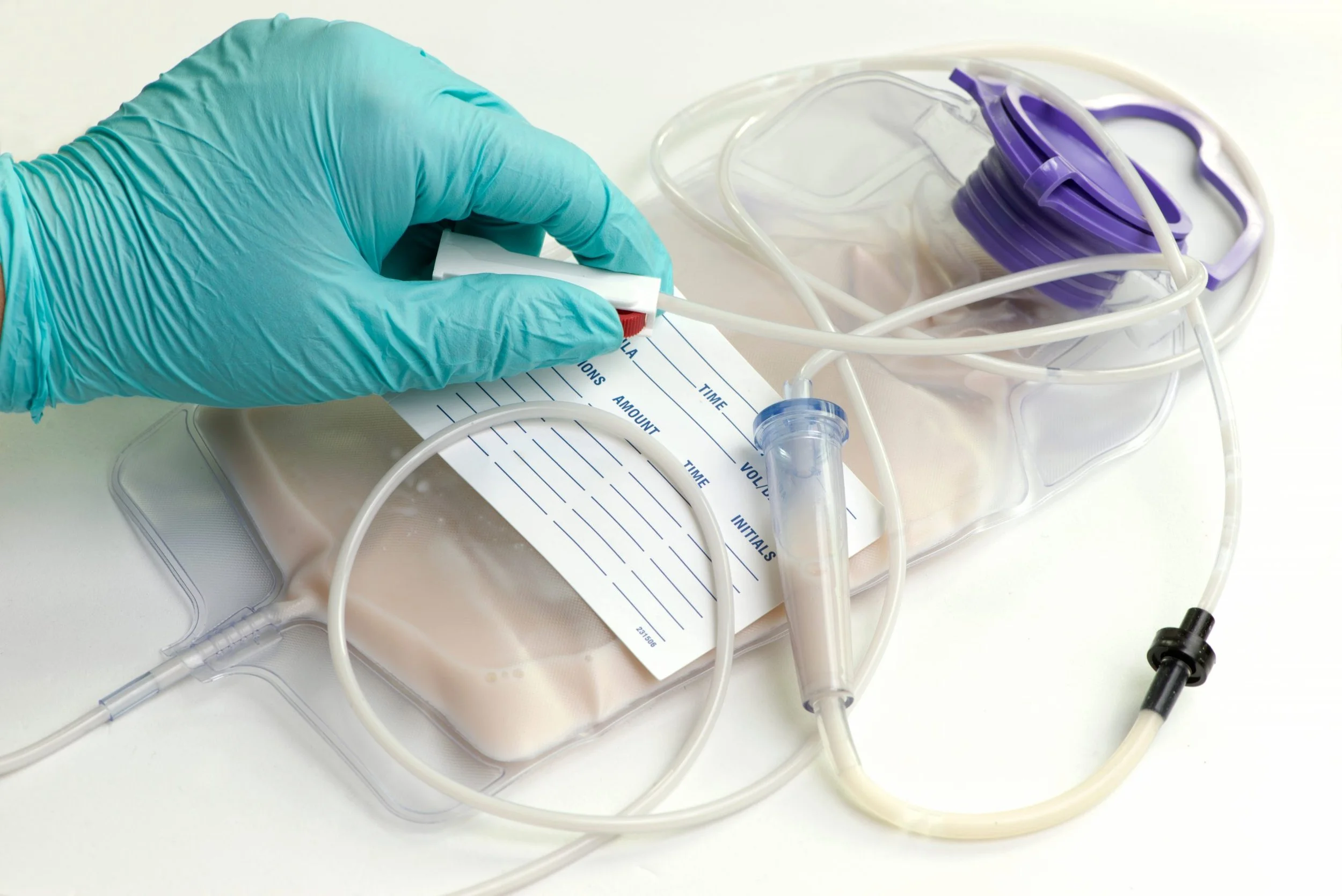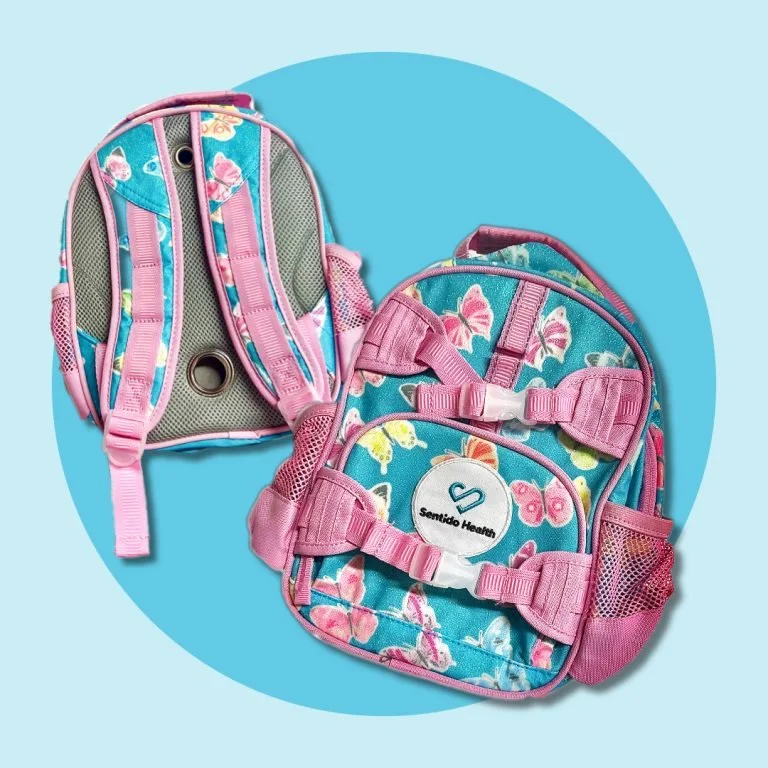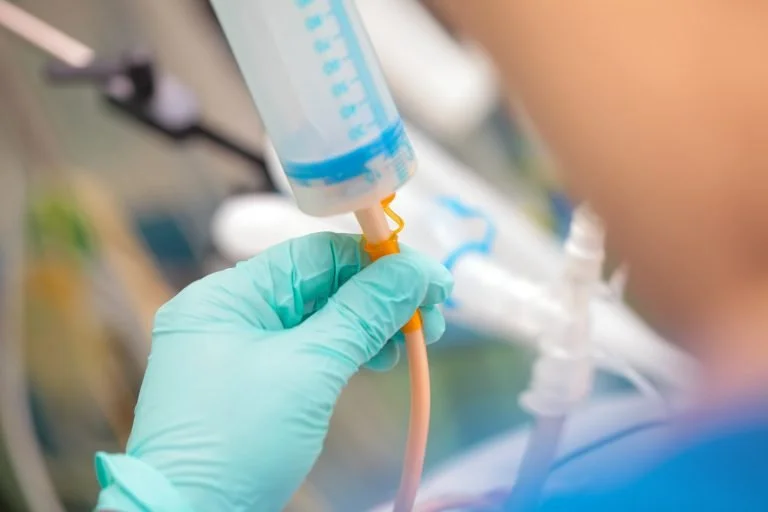Tube Feeding Supplies 101
After a feeding tube is placed, your healthcare professional will refer you to a Durable Medical Equipment (DME) company for your medical supplies and training. Your training will take place either at the hospital or your home. Through this education, you will become comfortable performing a feed and caring for all of your equipment. If you are in need of a DME company, reach out to us at Sentido Health so we can get you set up with stress-free monthly deliveries.
The supplies needed to perform a tube feeding depend on the type of tube you have and how you administer it. There are lots of supplies used to perform a feed. Make sure you know what each piece of equipment is used for and how to take care of it properly. You can always ask your nurse or DME company any questions you might have. In this blog we will discuss all of the common supplies used for tube feeding. Note – supplies used in the hospital can differ from the supplies you receive from your DME company.
FEEDING TUBE
There are many kinds of feeding tubes. They can be categorized into short-term and long-term tubes. Read our Types of Feeding Tubes blog to learn about the common feeding tubes used today.
FEEDING PUMP
The Moog EnteraLite Infinity and the Covidien Kangaroo Joey are the two main types of feeding pumps in the U.S. The Infinity pump is a smaller and more lightweight pump compared to the Kangaroo. The pump you or your loved one will receive depends on the person’s size, feeding requirements, and the DME company. Feeding pumps can be used in the home and placed on the IV pole, or they can be placed in enteral backpacks and taken on the go.
FEEDING BAGS
Your DME company will provide you with feeding bags. One feeding bag should be used every 24hrs. It is not recommended to rinse and reuse bags; however, if you have leftover formula, you can place the bag in the refrigerator between feeds.
IV POLE
Most DME companies will provide you with an IV pole to place your feeding pump and feeding bag on.
ENTERAL BACKPACK
Enteral Backpacks are backpacks made to fit a feeding pump with a hole in the back for the tube to come through. These enteral backpacks are often supplied by your DME company and are covered by insurance. They are extremely helpful and convenient for mobile children to feed on-the-go.
FORMULA
There are several types of formulas for different medical needs. Your doctor and/or dietitian will recommend what formula is best for you. Your DME provider will then supply you with your formula, based on your insurance.
SYRINGES
You can receive syringes through your medical supplier, depending on your insurance. Syringes come in a variety of types and sizes. For example, catheter tip syringes are large with a long-tip and slip tip syringes are short with a thin tip. Many families use syringes for feeding, venting, and giving medications. They can be reused at home by washing with soap and warm water. Note – do not put syringes in the dishwasher.
EXTENSION SETS
Extension sets are made for G buttons. They are used to feed, administer liquids, and give medication. They attach to the button and connect to a feeding pump, syringe, or a feeding bag. Most extensions sets are replaced every 1 to 2 weeks, but can be used for up to a month. Make sure to prime extension sets before use, and flush with water after use. G Button manufacturers produce their own extension sets for their specific button. They come in many lengths and have different port options available, to best fit your needs.
ADDITIONAL SUPPLIES
Micropore: Micropore is a paper tape that comes off easily when wet. It is a versatile adhesive and is commonly used for securing G-tube or GJ-tube extension sets to the skin.
Medipore: Medipore is a cloth tape that is flexible, breathable. It is a pre-perforated adhesive, so no scissors are necessary.
HY tape: This is a non-breathable waterproof tape that works well for sensitive skin and for taping NG-tubes.
Duoderm: Duoderm is a dressing that applies directly to the skin for an NG/NJ tube to lay on. The tube is commonly secured to the Duoderm by a piece of Tegaderm.
Tegaderm: Tegaderm is a transparent film dressing that can be used to cover and protect NG/NJ tubes, catheter sites, wounds. Tegaderm is commonly applied on top of the tube and Duoderm.
Gauze: Gauze is a thin translucent fabric of silk, linen, or cotton used to care for the stoma site. Gauze is commonly used to dress new stoma sites, which can be irritated and oozy after surgery. This helps keep the area clean and dry, preventing granulation tissue.
Cotton Swab: Cotton swabs are commonly used to clean the stoma site and can be used to help clean feeding pumps.
Lube: Water soluble lubricant can help when replacing feeding tubes in the home.
PH Strips: PH test strips can be used to ensure correct placement of a feeding tube in the stomach. The process involves drawing gastric fluid by syringe and testing the aspirate for acidity using a pH strip.
Stethoscope: A stethoscope can be used to ensure correct placement of an NG tube. This process involves listening for a whooshing sound as air enters the stomach by placing a stethoscope over the patient’s upper abdomen while instilling a 30 cc air bolus using an irrigation syringe.
If you are in need of tube feeding supplies, please reach out to Sentido Health and we would be happy to help! 713.955.2123.
Resources:



